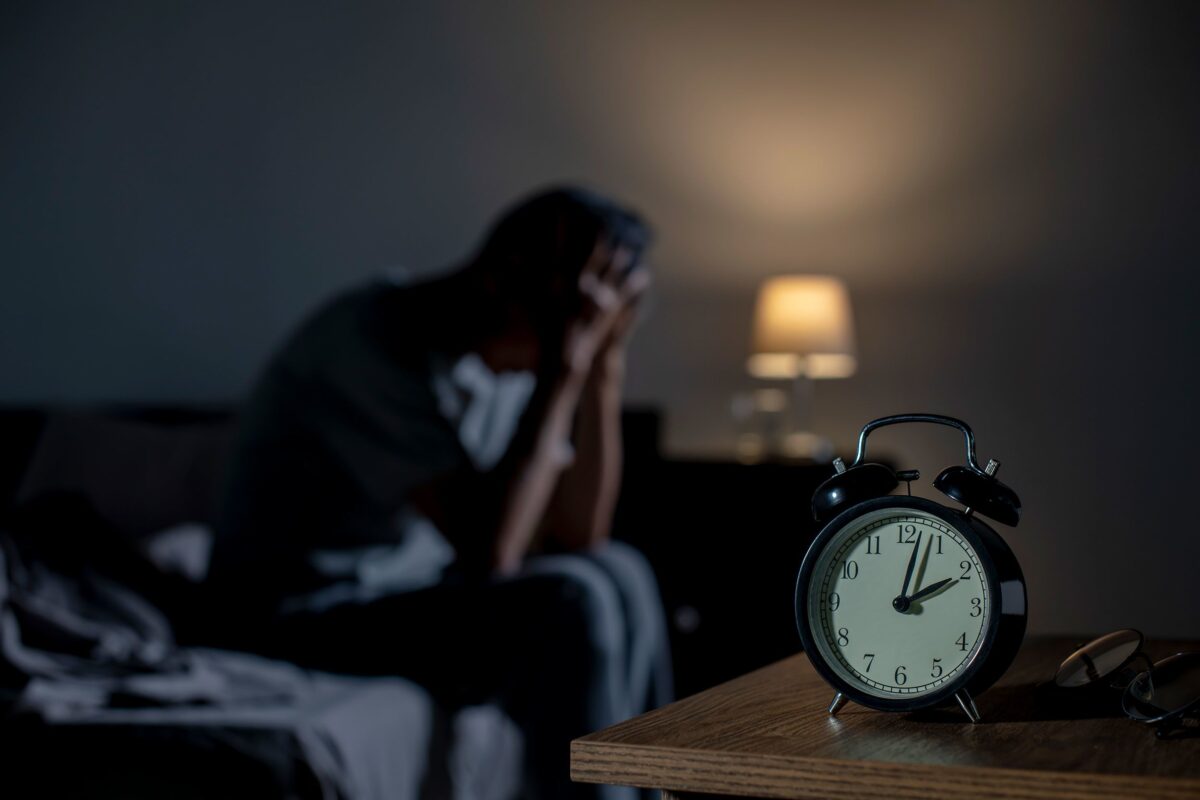Introduction:
Since the beginning of time, sleep—a vital aspect of human existence—has captivated and mystified people. While some people find it easy to drift into dreamland, others find it to be a difficult quest that causes them to become restless and frustrated. This extreme disparity in feelings is frequently linked to a variety of sleep disorders, the most common and confusing of which is insomnia.
The Mysteries of Insomnia
Millions of people worldwide suffer from insomnia, a condition marked by trouble falling or staying asleep. This condition is not age- or gender- or culture-specific. It’s a persistent ailment that can seriously lower one’s quality of life, not just a transient annoyance. The etiology of insomnia is frequently complex and might involve anything from physiological abnormalities to psychological pressures.
The Complexities of Sleeplessness
There is no one type of insomnia; rather, there is a range of forms that insomnia can take, each with unique traits and underlying mechanisms.
Transient Insomnia:
This type of insomnia is often brought on by stressful situations or important life events, but it is only temporary in nature, lasting a few nights or weeks before going away on its own without the need for medical attention.
Acute Insomnia:
Similar to transitory insomnia, acute insomnia usually results from brief stressors but lasts for several months. Even though it might go away on its own, if treatment is not received, it could develop into a chronic illness.
Chronic insomnia:
The most severe type of insomnia, persistent insomnia grips a person nonstop and can last for months or even years. Its causes are frequently complex, including elements from the psychological, physiological, and environmental domains. Chronic insomnia impairs mood regulation, cognitive performance, and general well-being in addition to disturbing sleep at night and throughout the day.
Exposing the Fundamental Mechanisms
Investigating the complicated mechanisms behind insomnia reveals a multifaceted interaction between environmental, psychological, and neurobiological components.
Neurobiological Factors:
The fine balance between awake and sleep is regulated by neurotransmitters like norepinephrine, dopamine, and serotonin. This equilibrium may be thrown off, resulting in the sleep disturbances that are typical of insomnia due to disruptions in their signaling pathways.
Psychological Factors:
Thoughts and emotions in the mind’s maze-like structure have a significant impact on sleep patterns. Insomnia can be fueled by stress, anxiety, sadness, and trauma, which can cast a shadow over the peaceful scene of sleep.
Environmental Factors:
Our surroundings are full of things that could keep us from sleeping, like the constant illumination of screens and the noise of city life. Getting rid of these contemporary encumbrances is frequently essential to regaining peaceful sleep.
Finding Your Way to a Restful Night’s Sleep
Even though insomnia can seem unbeatable, refreshing sleep can be achieved with a multimodal strategy that includes pharmaceutical treatments, lifestyle changes, and therapy interventions.
For insomnia, cognitive-behavioral therapy (CBT-I):
CBT-I, which is highly regarded as the gold standard for treating insomnia, attempts to correct unhelpful sleeping patterns and false sleep-related beliefs. With methods including sleep restriction, stimulus management, and relaxation training, CBT-I enables people to create a healthy connection with sleep.
Pharmacotherapy:
This may be necessary if non-pharmacological therapies are shown to be insufficient. But using sleep aids exclusively is dangerous since they can lead to dependency and cover up other problems without treating the actual cause of insomnia.
Lifestyle Changes:
Adopting a sleep-friendly way of living is essential to strengthening the basis of sound sleep. In the pursuit of improved sleep, minor yet meaningful adjustments can have a big influence, from creating a calming nighttime ritual to improving sleep hygiene measures.
Examining the Effects of Sleep Issues
Beyond insomnia, a plethora of other sleep disorders exist in the background, each with unique difficulties and complications. Sleep apnea and restless legs syndrome are two conditions that highlight the variety of sleep disturbances. Sleep apnea is characterized by sporadic breathing pauses during sleep, while restless legs syndrome is characterized by restless leg movements. A neurological condition that includes severe daytime sleepiness and abrupt episodes of muscle weakness, narcolepsy, highlights the complex relationship between sleep and awake even further.
Recognizing the Link Between Sleep and Health
Sleep disorders have considerably more consequences than just being tired and drowsy. The significant effects of insufficient sleep on one’s physical, mental, and emotional health are highlighted by recent study. Prolonged sleep deprivation aggravates mental health conditions and cognitive decline in addition to impairing immune system performance and metabolic health. The consequences of poor sleep are felt in every aspect of human physiology and psychology, from heightened risk of heart disease to compromised memory consolidation and emotional control.
Creating a Route for All-Inclusive Sleep Care
Given the widespread prevalence of sleep problems and their extensive consequences, it is crucial to adopt a comprehensive approach to sleep treatment. To address the complex aspects of sleep health, this means promoting interdisciplinary collaborations between researchers, policymakers, healthcare providers, and community stakeholders. Optimizing sleep outcomes and improving overall well-being requires a holistic approach that goes beyond typical silos. This includes early detection, precise diagnosis, customized therapies, and patient education.
Developing People’s Capabilities via Sleep Literacy
Sleep literacy, which equips people with the knowledge and abilities needed to manage the intricacies of sleep health, is at the core of comprehensive sleep care. Sleep literacy is essential for creating a culture that values and protects sleep, as it dispels popular beliefs and misconceptions and advances evidence-based techniques for improving sleep hygiene for treatment of insomnia. We can begin a path towards a culture where restful sleep is valued as the cornerstone of vibrant health and vitality by providing people with the tools they need to identify the indicators of sleep disorders, seek timely assistance, and develop healthy sleep habits.
Conclusion
With its many subtleties and wide-ranging effects, insomnia is a powerful foe in the field of sleep disorders. However, its mystery can be solved with information, fortitude, and a diverse approach to treatment, opening the door to peaceful sleep and improved wellbeing. One calm night at a time, as we traverse the complicated terrain of sleep problems, let’s not only face insomnia head-on but also make an effort to comprehend, relate to, and deconstruct its intricacies.




